“I reckon the Darien Gap may be a bit too intense for an expedition right now, but I’ve got a really good idea for a jungle expedition. Do you want to hear it?”
I’m sitting opposite Laura Bingham in her kitchen, unsuccessfully pushing away one of her enormous, drooling Newfoundland dogs. She looks up from a steaming mug of coffee and smiles, her eyes gleaming.
“It’s the third largest river in South America. We can eat what we find in the forest and fish from the river every day. There are jaguars, piranha and little caiman. It will be like Pocahontas, just in real life.”
Bingham’s so-called little caiman are in fact 20-foot-long black caiman—just one size down from an African crocodile. But as an adventurer and wildlife lover, this is a main selling point for me. I’m in, I tell her.
Intrepid Trio Paddles World-First Descent of the Essequibo River
The expedition plan
Don’t be fooled by the Disney reference. Laura Bingham is tough as nails and when she has an idea, you know it is going to be a good one. The 25-year-old English explorer has a habit of hunting down unique journeys around the globe. Her last expedition saw her cycle 7,000 km across South America without touching any money.
It was Bingham’s husband, survival expert and television host Ed Stafford, who first turned her attention to Guyana. He’d been to the South American nation a decade prior to film Lost Land of the Jaguars. He came back raving about the extraordinary and remote jungle, and his close encounters with its wildlife.
The interior of Guyana has an extraordinarily rich and diverse ecosystem with an expansive area of pristine virgin rainforest. It’s one of the few remaining unexplored regions of the world.
“I’m thinking of doing a world-first descent,” she tells me.
The Essequibo River, which runs the length of the country from south tonNorth, had never been descended from source to sea.
In fact, the source of the 1,000-km-long Essequibo River had never officially been documented. The last attempt to identify the source was made in 2013 by a German team, but was unsuccessful. When we set out on February 1, 2018, we aimed to be the first team to document the source, and then descend the river to the sea.
The team of paddlers
In addition to Laura, our trio of adventurers was rounded out by Pip Stewart, a British writer and adventure cyclist with experience pedaling in the Amazon, and me—an endurance athlete with a love for the jungle. Though I’d previously paddleboarded 1,000 miles down the Missouri River, kayaking was new to all of us.
Prior to departing for Guyana, we spent weeks practicing whitewater paddling skills and swiftwater rescues. On—and sometimes in—the frigid rivers of Wales in winter. Though Wales was a convenient meet-up location for us three Britons, admittedly, it was a strange place to train for a jungle expedition.
What the three of us lacked in kayak experience, our trio would make up for with our shared extensive experience with remote travel. We didn’t need to be world-class sea kayakers or whitewater paddlers to descend 1,000 km on Essequibo River—a successful expedition would come down to persistence and good risk management.
The headwaters of the Essequibo
Our journey began on the banks of the Essequibo River in Masakenari, a remote Wai Wai village located in the south of Guyana, near the border with Brazil. Masakenari can only be reached by chartering an internal flight on a small aircraft, landing on a short, dusty clearing called Gunn’s Strip, which is flanked by thick walls of near impenetrable jungle. Lush greenery carpets the landscape from horizon to horizon.
Throughout our journey, we collaborated with the Wai Wai, an Indigenous community who live within and manage a vast stretch of remote rainforest. World-class jungle survival experts themselves, we teamed up with Wai Wai guides to show us how to thrive in the jungle—from how to machete a path to tutoring us on all manner of poisonous frogs, venomous snakes, toothy fish and the many insects that would bite and burrow into our skin.
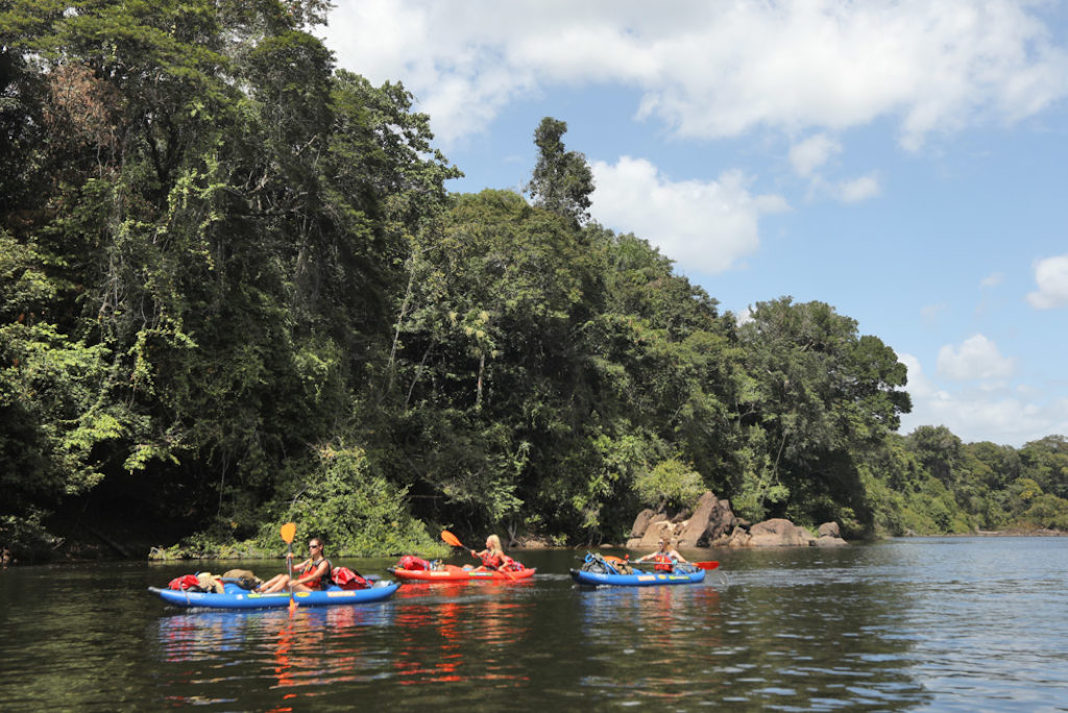
No one expected just how complex and arduous an endeavor it would be just to get to the source of the Essequibo.
For three weeks we pushed upstream as the broad expanse of river narrowed and the jungle closed in around us. Our team hauled two heavily laden dugout canoes under and over fallen debris. Our Wai Wai guides bared gritted teeth as they machete’d, chain sawed and axed through more than 200 enormous tree trunks barring the upstream path forward.
This section of the rainforest is Guyana’s first Community Owned Conservation Area (COCA), and the largest protected area in the country managed exclusively by an indigenous community. As we traveled, the Wai Wai investigated for signs of illegal mining operations. The threat of small-scale illegal mining is very real in remote regions, and recording the GPS coordinates of recently cut trails is critical to stopping it.
From dusk till dawn each day, we painstakingly edged our way west toward the river’s source in the Acarai Mountains. For two weeks the canopy was impenetrable and we didn’t see the sky. Some days we made it just 2 miles. Black humor and stubbornness was our fuel.
When the river was too chocked to travel farther upstream by boat, we set up a basecamp. We cached half our equipment and finished the steep trek by foot, cutting a line through dense undergrowth with machetes.
At its furthest source the mighty Essequibo is just a trickle, but that didn’t dampen our enthusiasm for finding it. Now we just had to turn around and paddle 1,000 km downstream to the sea.
One thousand to go
A month after setting off from the community of Masakenari we arrived back, having successfully located the source of the Essequibo River with five Wai Wai community members.
Just a month in the jungle and our bodies were already battered. Pip had a gnarly case of trench foot. We all had sores and various insects taking up residence in our skin. And Laura missed her 8-month-old son fiercely.
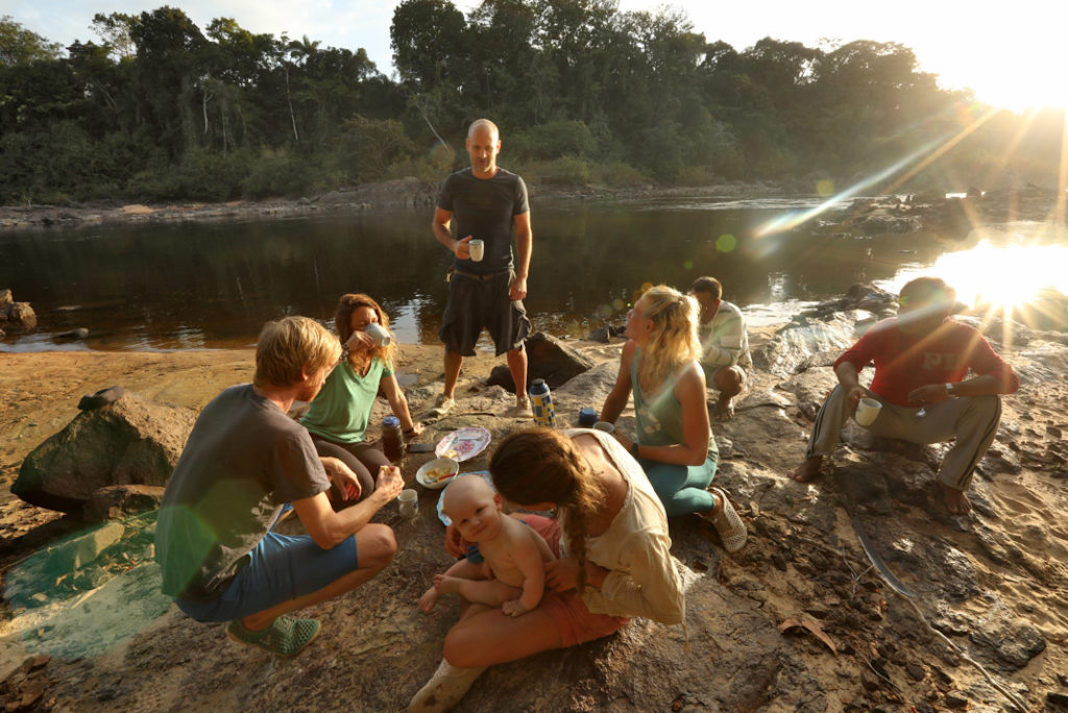
This is when expeditions get interesting.
It’s not brawn carrying explorers through to a successful expedition. It comes down to mental strength and the ability to stay optimistic and resolute.
Years ago, I only did solo journeys. Out there on my own, I knew there was no one to trust and depend on but myself, and this feeling was a real fascination for a time. I also learned through my solo journeys that there is only so far you can go alone—if you want to achieve a huge dream what you need is a fantastic team.
Faced with hardships, our friendship came into its own. We rallied around one another and belly laughed our way from source to sea, guffaws echoing across the jungle. We formed a sisterhood we could lean on during the inevitable down days, battling exhaustion, illness, infections and mental fatigue.
The ancient forest
Leaving the community of Masakenari for a second time, we again entered into the unknown. Hundreds of kilometers of uninhabited and untouched rainforest and river lay ahead of us, much of it undocumented.
Our daily challenge shifted from hoisting dugouts over logs to portaging around waterfalls and navigating 20-km-long rapids in inflatable kayaks. One morning, I looked up to see two colossal boulders looming over the river, each standing guard on its own bank. The bulky black masses looked like molten rock had dripped down from the heavens to settle in enormous folds and mounds.
As we passed between them a silence descended upon our group. The landscape mesmerized us. I felt we’d entered into a very ancient place; as though we had stepped into Jurassic Park, complete with macaws shrieking an eerily appropriate soundtrack overhead. I half expected to see a flock of pterosaurs skimming the canopy tops and a Tyrannosaurus rex burst through the trees.
The jungle family
Most mornings on the Essequibo we awoke to the guttural, primal roar of a single howler monkey. Its call built to a crescendo as the whole troop joined in the dawn call. Time to rise, light a fire and set the water to boil.
Over breakfast we’d discuss the new footprints in camp, telling us a tale of the menagerie wandering past through the night—labba, tapier, scorpion, jaguar, caiman or armadillo. Then we’d huddle around paper maps and GPS, analyzing the topography and running through the day’s anticipated route.
With camp packed, we’d push off into glassy water and soak up the stillness, the calm before the first rapids. Our Wai Wai guides often had their eyes on the banks, watching for wildlife, catching even the smallest movements and listening for the stories being told well beyond the visible banks. Their awareness of the wildlife surrounding us was like nothing I have ever encountered.
Many days on the Essequibo River consisted of simple flatwater paddling.
Others had us navigating thrilling rapids, or spectacular waterfalls and tricky portages.
As we descended farther north, the river began to mellow and widen and we saw signs of people again. We stopped to meet with communities when possible, listening to success stories about the foundations of sustainable ecotourism being built in Guyana.
Most days, we began the search for camp in mid-afternoon. By six o’clock our hammocks were slung, the fire crackled and we lined up, waist deep in the river, rinsing the day’s sweat and grit from our skin.
There, we regaled each other with tales from the day—the emerald tree boa wrapped tightly around a branch overhanging the river; or our guide, Rummel, going broadside down a rapid, paddle in one hand and a fishing rod in the other, whooping at the enormous fish he caught. We compared war wounds—grossing each other out with the worms, cysts and infections we had to squeeze, dig out and douse in iodine. In the jungle, we were perfectly pink and fleshy hosts. We took to giving our parasites names—Borris lived in my ankle for nine weeks despite my best efforts to evict him. Laura’s armpit was home to Donald for three weeks.
Sometimes bathing was cut short by the arrival of a 12-foot caiman, a bit too curious and close for comfort.
We’d bound for shore then turn on our heels to see the sun sink below the horizon. As daylight faded, the glowing red eyes of curious caimans often shone back at our torches from the river.
Once dinner had been inhaled, one by one we would each peel away to our hammocks to settle in for the night. Our days were bookended with the drifting notes of our Wai Wai guides—Ant’s flute sharing the stories of jungle animals, or Jackson and Nereus’ voices singing traditional songs.
One night, the final goodnight comes from the low grunts of a jaguar in the near distance. Tomorrow we get to wake up and do it all again. The wildlife, the forest, the mighty river, the Wai Wai and this deep sense community have given me more than any of them will ever know.
Ahead of us still lay the final 400 km to the mouth of the Essequibo.
We would navigate through a labyrinth of islands as the river broadened before the home stretch, a 150-km slog to the Atlantic Ocean through relentless headwinds and rough sea conditions. But that’s all still to come.
In the meantime, I fall asleep to the sounds of the jungle, nestled into a camp tucked in amongst the giant rainforest trees, slung side-by-side with my team. My little jungle family.
The team successfully reached the Atlantic Ocean on April 17, 2018, 72 days after setting out. The trio is the first group to descend the Essequibo River from source to sea. Author Ness Knight is also the first person to cycle solo and unassisted 2,000 km across the Namib desert of Namibia and the first woman to swim the United Kingdom’s Thames River from source to London. She has her sights set on becoming the first woman to row solo across the Pacific Ocean.
Welcome to the jungle, we take it day by day, of you want it you’re gonna bleed but it’s the price to pay. —Guns N’ Roses | Feature photo: Jon Williams



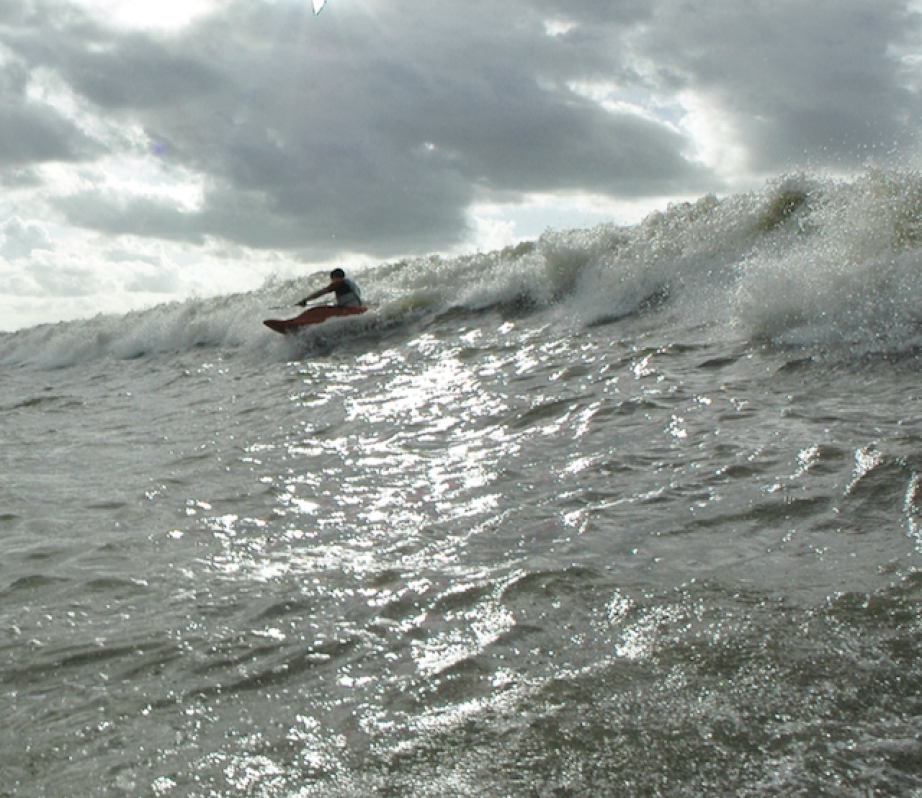

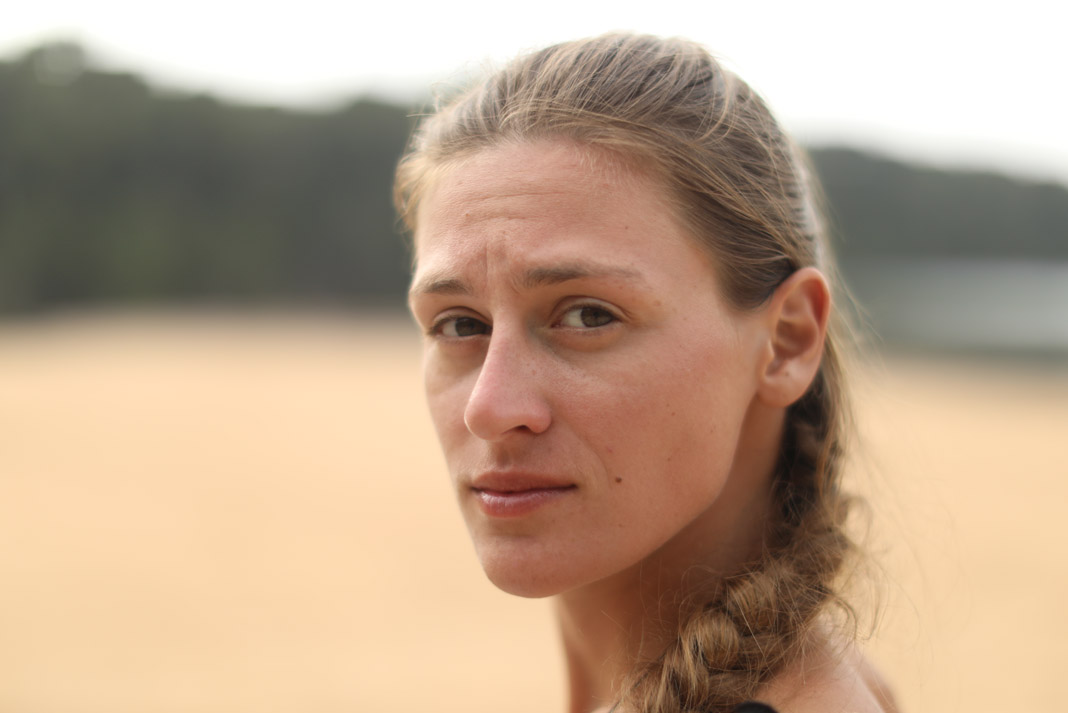
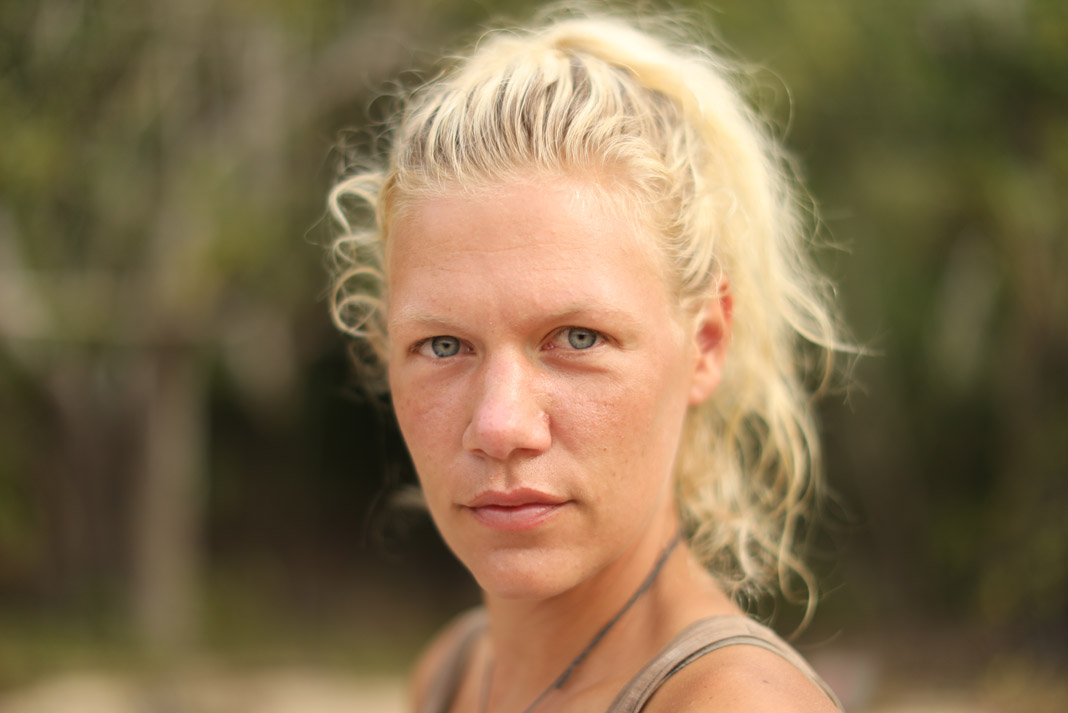
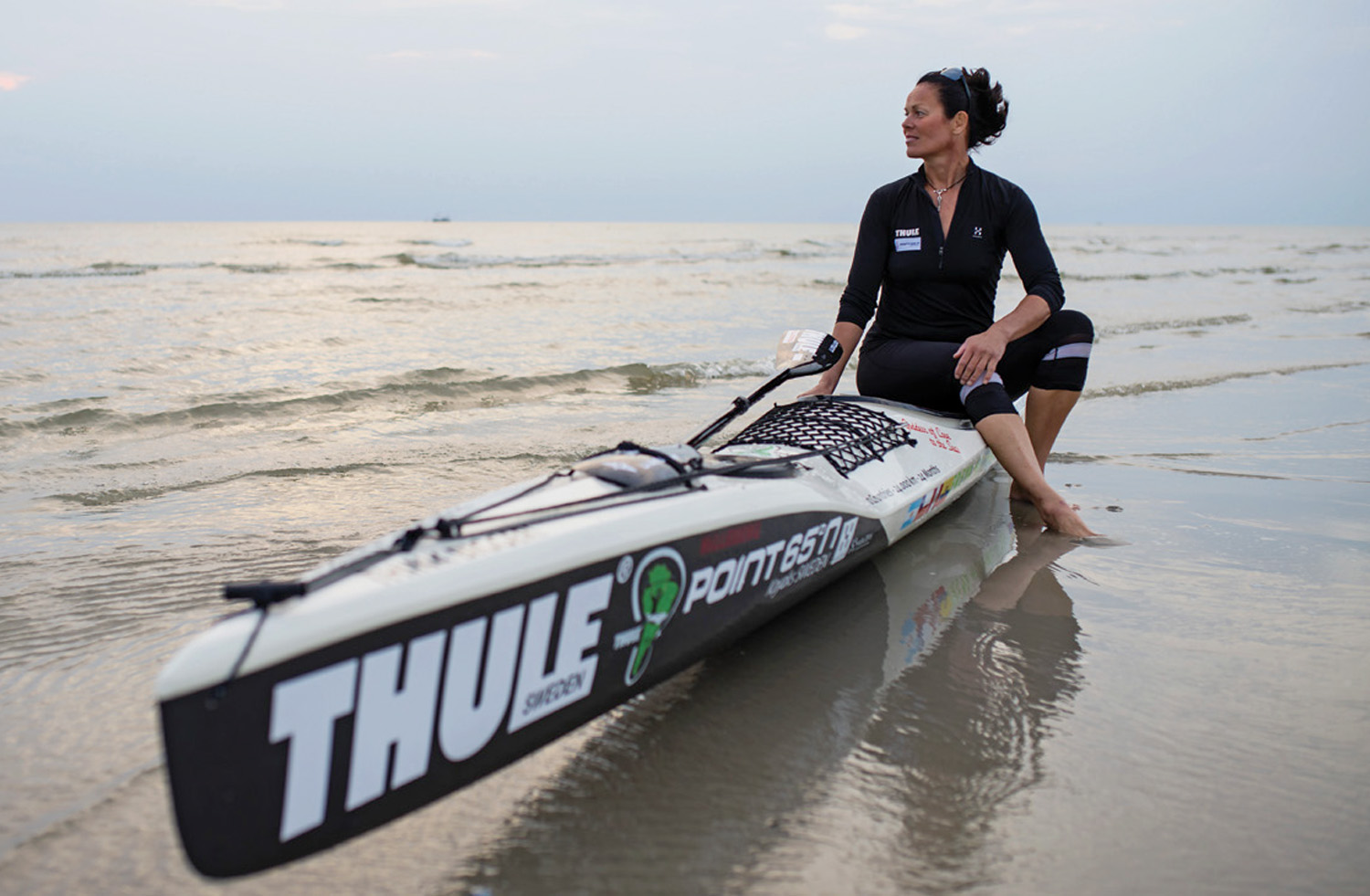
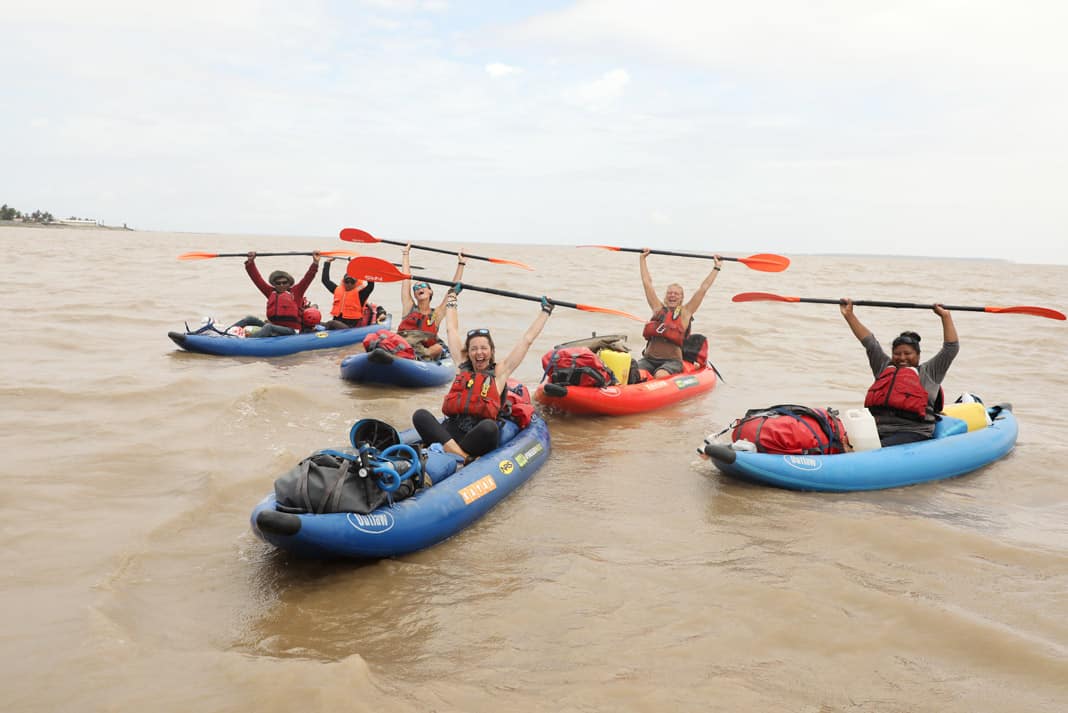
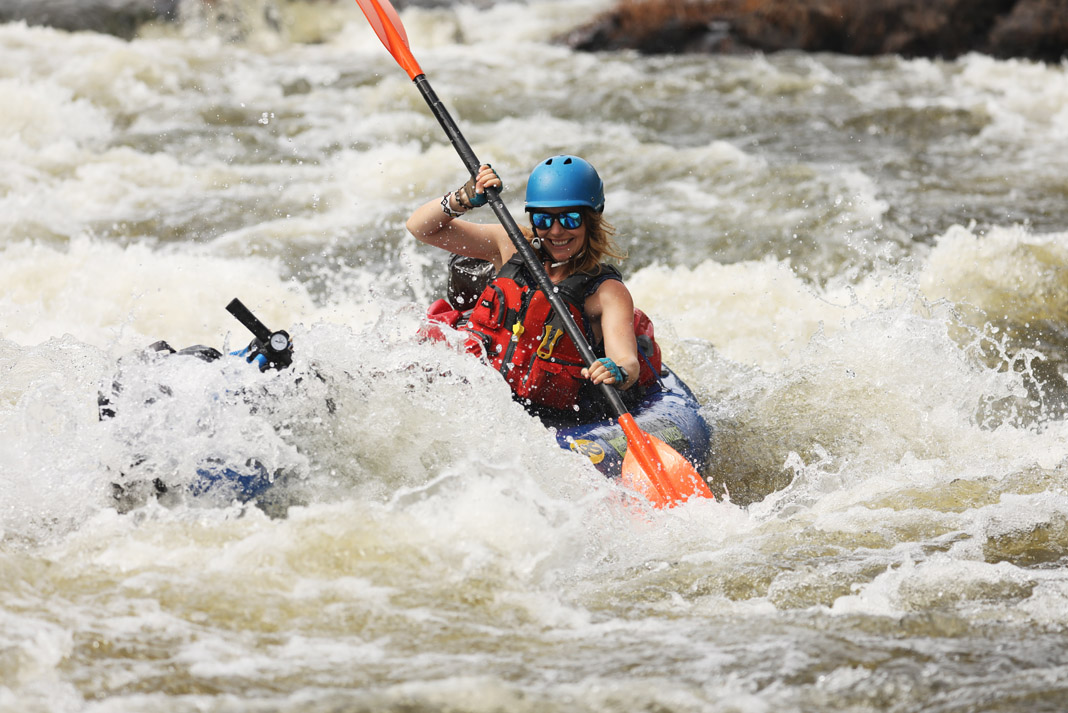
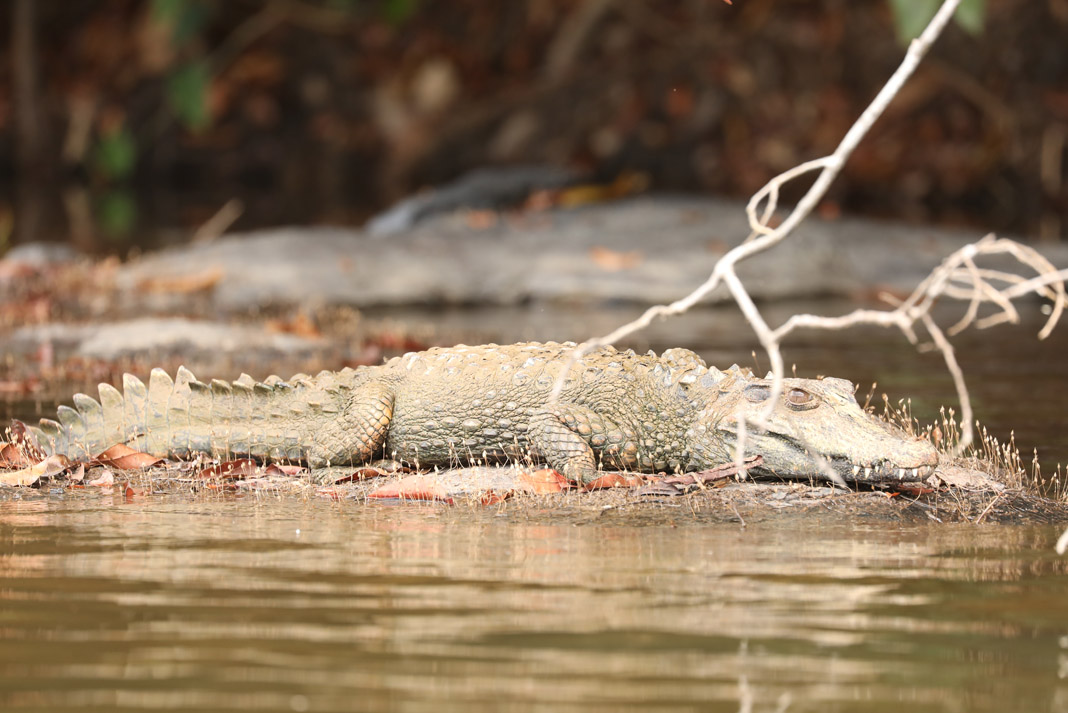
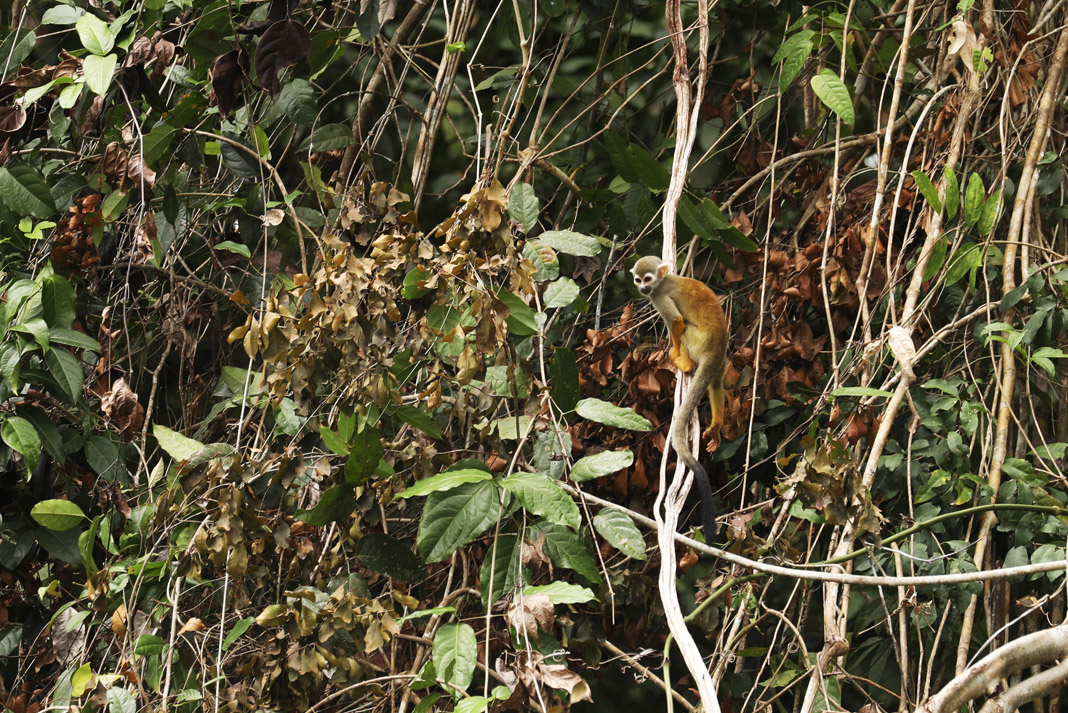
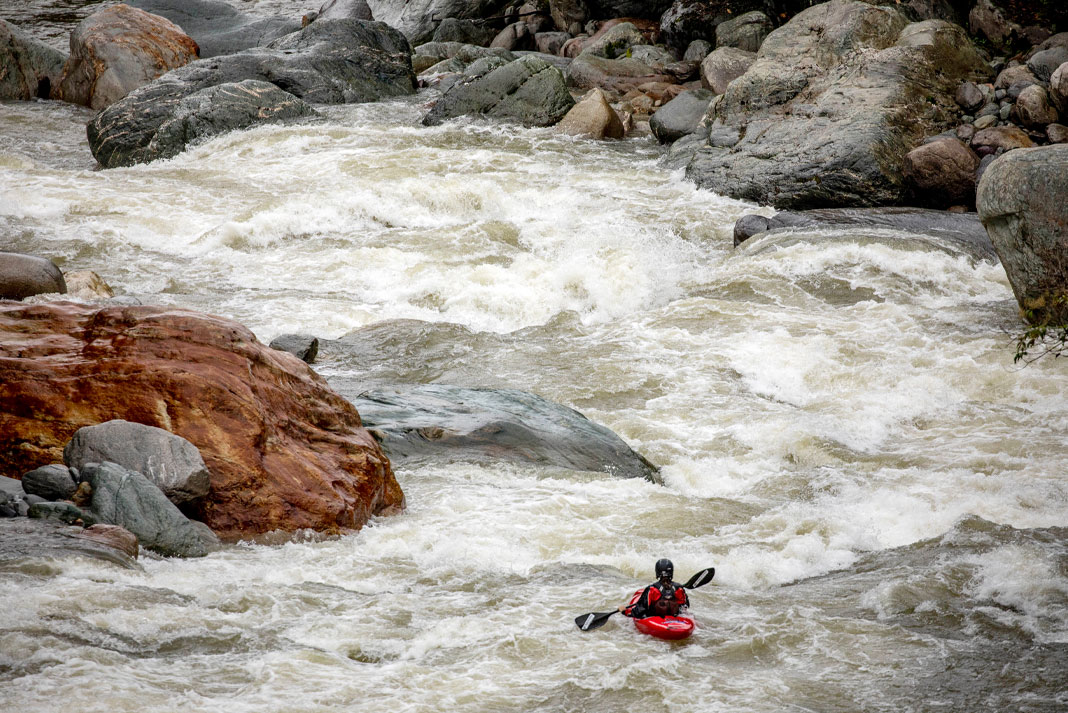
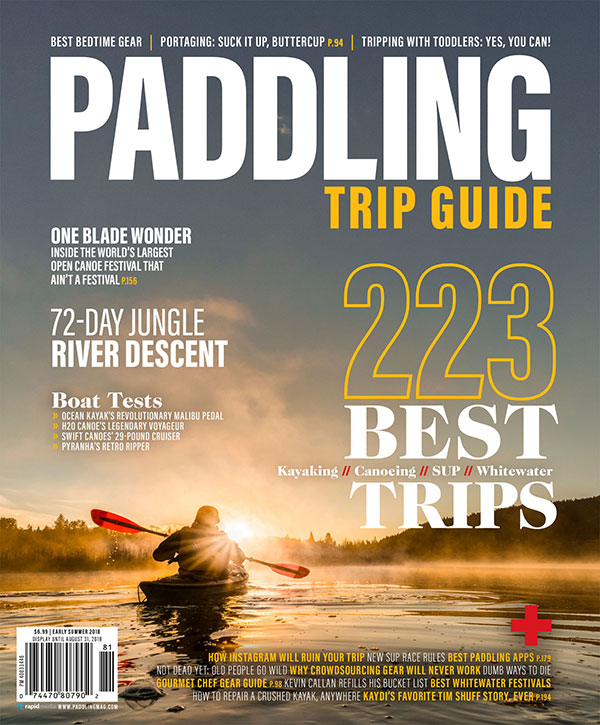 This article was first published in the Early Summer 2018 issue of Paddling Magazine.
This article was first published in the Early Summer 2018 issue of Paddling Magazine. 

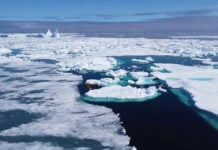

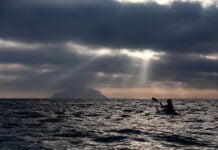

Great articles today….I miss seeing the lush jungles of the yucatan and central America closeup. This issue took me back there.
Great article, I was on the Essequibo and Rupununi River back in 1991 with a group of youths from 17-21 years of age with an organization call “Youth Challenge International”. I remember being stuck in a jeep all night with a jaguar on the hood and hood. It stayed with us all night. I also remember the 20 foot Black Caimans along the Essequibo, as well as the fun Capybaras that would swim with us. Was also involved with tracking Vampire bats, and cataloguing Orchids It was an experience of a lifetime.
Third longest? The Essequibo is outside of the top 30 longest rivers in South America. It is what it is, an awesome guided river descent. Why make it up as anything else?